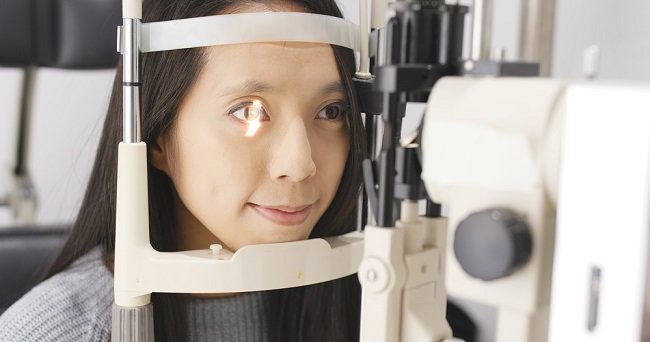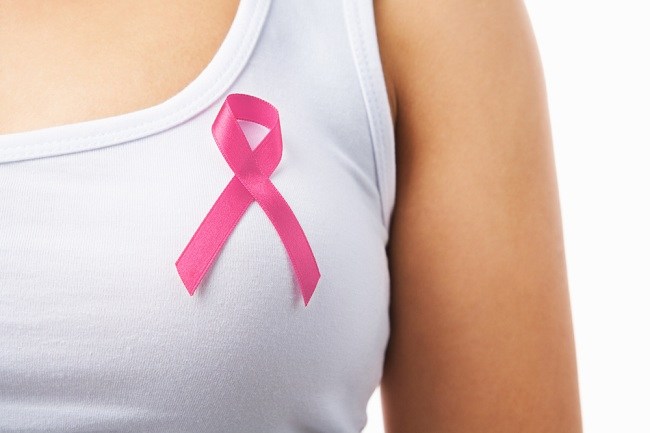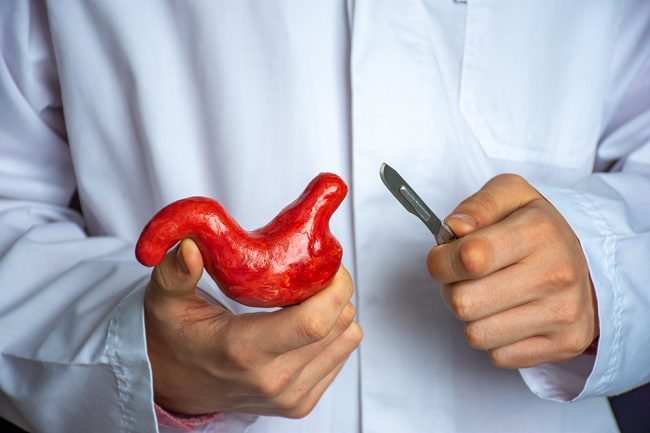Rhabdomyosarcoma is a cancer that grows in connective tissue and skeletal muscle. This type of cancer is rare and more manyattack children. Rhabdomyosarcoma can affect any part of the body that has muscle, including the neck, chest, abdomen, the area around the eyes, or the legs.
Rhabdomyosarcoma originates from rhabdomyoblast cells, which are cells that form early in pregnancy and develop into skeletal muscle, which grows uncontrollably, rapidly, and damages the surrounding healthy tissue.

Types of Rhabdomyosarcoma
Rhabdomyosarcoma is a rare type of cancer. There are several types of rhabdomyosarcoma, namely:
Embryonal rhabdomyosarcoma
Embryonal rhabdomyosarcoma is the type of rhabdomyosarcoma that most often affects children under the age of 6 years. Usually, embryonal rhabdomyosarcoma grows in the head and neck area, bladder, and genitals.
This type of rhabdomyosarcoma spreads quickly, but responds well to treatment.
Alveolar rhabdomyosarcoma
Alveolar rhabdomyosarcoma is a type of rhabdomyosarcoma that often occurs in adolescents. This type of rhabdomyosarcoma tends to attack the legs, chest, and abdomen.
Alveolar rhabdomyosarcoma spreads rapidly and is more difficult to treat than embryonal rhabdomyosarcoma. Therefore, patients with this tumor must be treated intensively.
Pleomorphic rhabdomyosarcoma
Pleomorphic rhabdomyosarcoma or anaplastic rhabdomyosarcoma is a rare type of rhabdomyosarcoma. This type of tumor is more common in adults.
Compared to other types of rhabdomyosarcoma, anaplastic rhabdomyosarcoma does not respond to treatment, so it is more difficult to cure.
Causes and Risk Factors of Rhabdomyosarcoma
Rhabdomyosarcoma occurs when rhabdomyoblast cells develop abnormally and grow uncontrollably. These cells then form tumors that can damage healthy body tissue and spread throughout the body.
It is not known why this condition occurs. Even so, the following factors can increase a person's risk of developing rhabdomyosarcoma:
- Male gender
- Under 10 years old
- Suffering from genetic disorders, such as neurofibromatosis type 1, Li-Fraumeni syndrome, Beckwith-Wiedemann syndrome, Costello syndrome, and Noonan syndrome
- Have a family history of rhabdomyosarcoma
- Experiencing X-Ray radiation exposure while still in the womb
- Having a mother with a history of drug abuse and alcohol addiction, especially during pregnancy
Symptoms of Rhabdomyosarcoma
Although more common in children, rhabdomyosarcoma can also affect adults. Symptoms of rhabdomyosarcoma depend on the size and location of the tumor, as well as the severity of the patient.
The appearance of lumps and swelling is one of the early signs of rhabdomyosarcoma. The lump will be followed by the appearance of other symptoms, depending on the area and location of the tumor growth.
Symptoms of rhabdomyosarcoma in the head and neck area:
- Headache
- Nasal congestion
- Swollen eyes
- Eyes sticking out
- Drooping eyelids
- Cockeye
- Bleeding from the ear
- Nosebleed
Symptoms of rhabdomyosarcoma in the stomach:
- Throw up
- Stomach pain
- Constipation
Symptoms of rhabdomyosarcoma in the urinary tract and reproductive system:
- Difficulty urinating or defecating
- There is blood in the urine or stool
- Lumps or bleeding in the vagina or rectum
Symptoms of rhabdomyosarcoma in the arms or legs:
- Swelling in the legs
- Pain or numbness in the area where the tumor is growing
When to go to the doctor
Immediately see a doctor if you or your child shows any of the above symptoms or signs, especially if they have been going on for a long time. Early detection and treatment is expected to prevent the spread of rhabdomyosarcoma to other organs of the body.
Diagnosis of Rhabdomyosarcoma
The doctor will ask about the symptoms and medical history of the patient and his family, followed by a thorough physical examination, including checking for lumps or swelling that grows.
To confirm rhabdomyosarcoma, the doctor will perform further examinations with the following methods:
- Blood tests, including genetic tests, complete blood count, liver function tests, and blood chemistry tests
- Scanning tests, such as ultrasound, X-ray, CT scan, PET scan, MRI, and bone scan (bone scan), which aims to detect the location of the tumor and whether it has spread
- Biopsy or tissue sampling of the bone marrow, to determine whether the tumor is cancerous, and determine the type of rhabdomyosarcoma
If the patient is diagnosed with rhabdomyosarcoma, the doctor will determine the stage or severity, to determine the treatment procedure to be carried out. This stage is based on the size and whether the tumor has spread to lymph nodes or other parts of the body.
Stage 1
In stage 1 rhabdomyosarcoma, the size of the tumor can vary and can invade lymph nodes and nearby organs, but has not spread to distant organs. Tumors in stage 1 usually begin to grow in the:
- The area around the eyes
- Head and neck, except the area near the lining of the brain
- Urinary and genital tract, except bladder and prostate
- Bile duct
Stage 2
Rhabdomyosarcoma stage 2 is characterized by a tumor that is less than 5 cm in size and has not spread to the lymph nodes. At this stage, the tumor usually begins to grow in the:
- Bladder and prostate
- Arms and legs
- Muscles near the lining of the brain
- Other body parts not mentioned in stage 1
Stage 3
Stage 3 is characterized by a tumor measuring less or more than 5 cm, which begins to grow in the same area as stage 2 rhabdomyosarcoma. The difference is, a stage 3 tumor has spread to nearby lymph nodes and other parts of the body.
Stage 4
In stage 4, the cancer has spread to the lymph nodes and other organs, such as the liver, lungs, and bone marrow.
Rhabdomyosarcoma Treatment
Treatment for rhabdomyosarcoma usually combines one treatment method with another. Here is the explanation:
Operation
Surgery aims to remove the cancer and surrounding tissue. However, in some cases, the tumor cannot be completely removed, so chemotherapy or radiotherapy must be performed.
Chemotherapy
Chemotherapy aims to shrink the size of the tumor before surgery and reduce the risk of the cancer growing back after surgery. Some of the drugs used in rhabdomyosarcoma chemotherapy are doxorubicin, vincristine, cyclophosphamide, and etoposide.
Radiotherapy
Radiotherapy aims to kill cancer cells using high radiation beams. Radiotherapy is usually combined with chemotherapy, and is done over several weeks. Radiation therapy is done 5 days a week, with each session about 15–30 minutes.
Complications of Rhabdomyosarcoma
Rhabdomyosarcoma can metastasize or spread to other organs. This makes the treatment and recovery process more difficult. Usually, the organs most commonly affected by the spread of rhabdomyosarcoma are the bones, lymph nodes, and lungs.
In addition, rhabdomyosarcoma sufferers can also experience other complications due to side effects of treatment, including:
- Hearing disorders
- Growth disorders
- Fertility disorders
- Kidney and heart disorders
- Rhabdomyosarcoma comes back
Prevention of Rhabdomyosarcoma
Rhabdomyosarcoma cannot be prevented, especially those that occur due to genetic disorders or a family history of this disease. However, pregnant women can reduce the risk of their unborn child developing rhabdomyosarcoma by avoiding drug abuse and consumption of alcoholic beverages during pregnancy.









